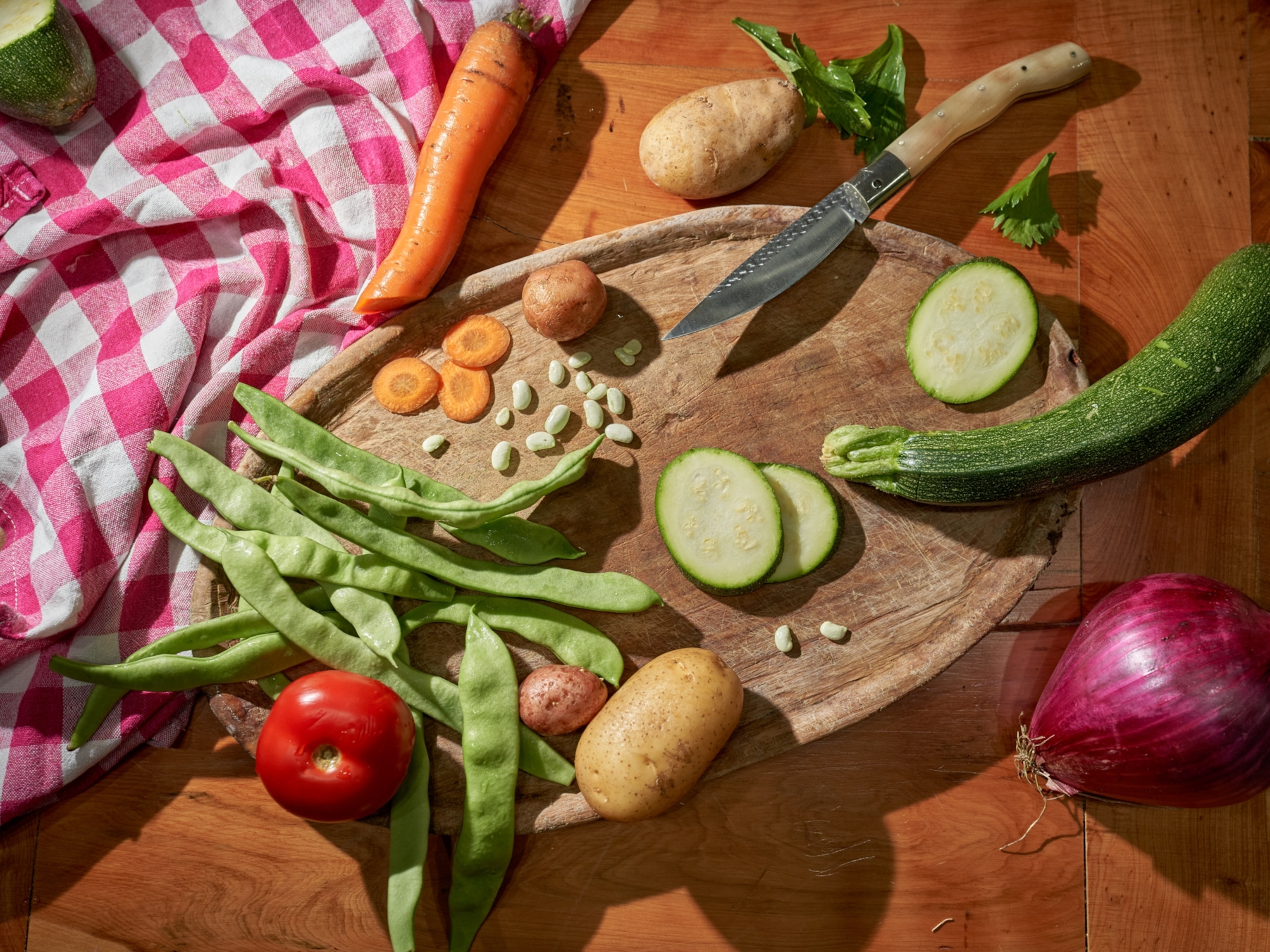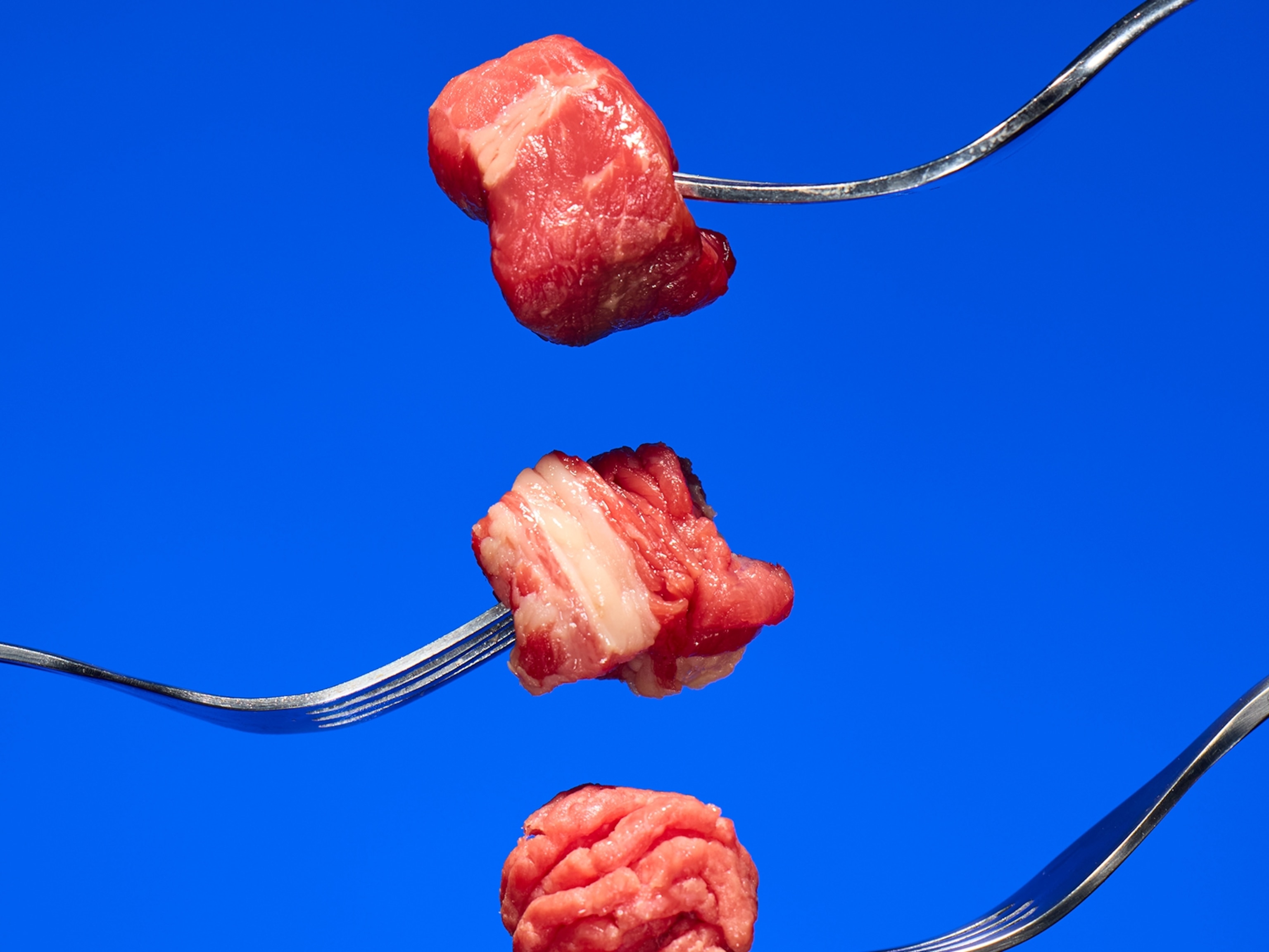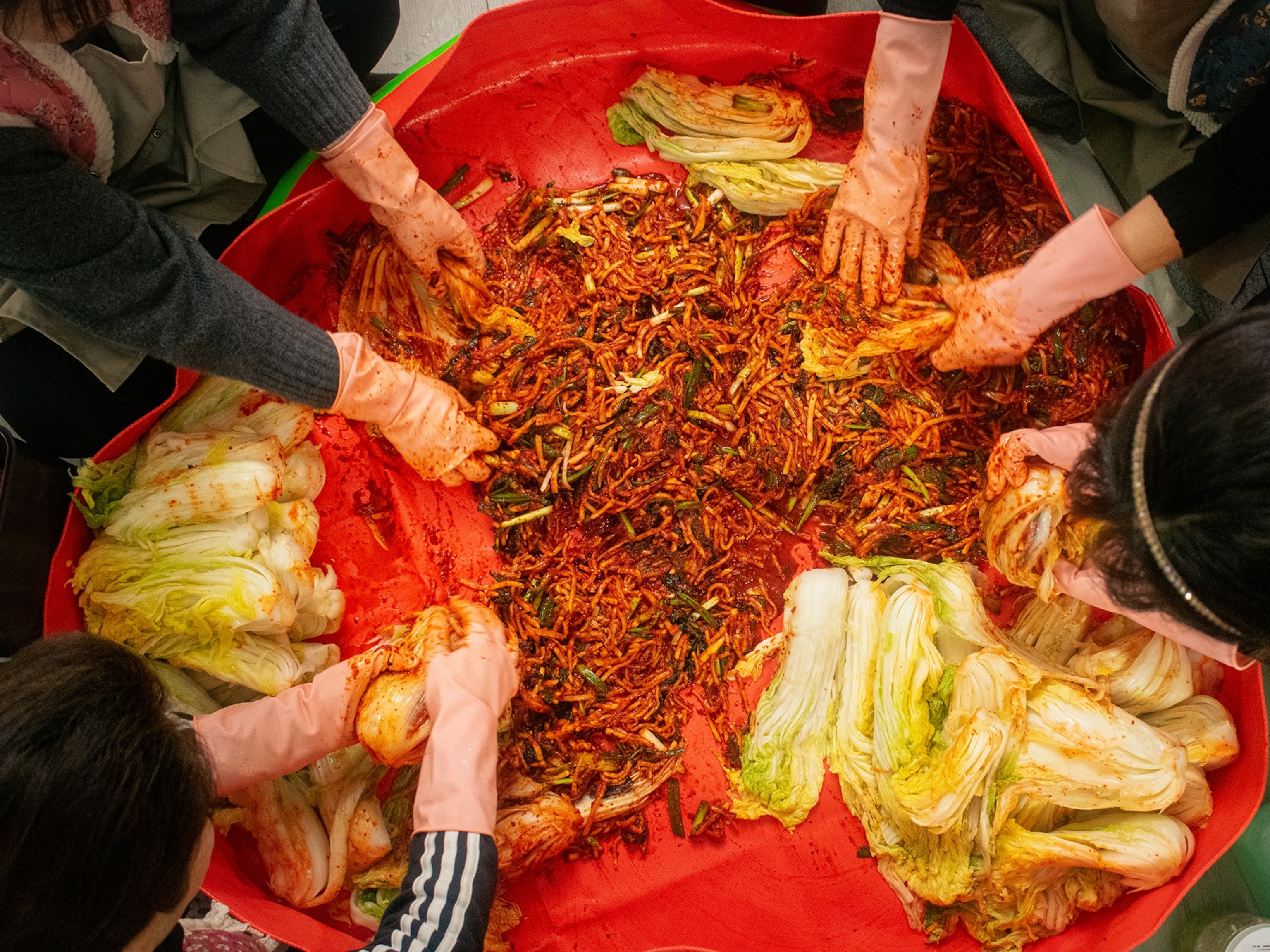
Eating Water Up: The Water “Footprint” of Food
One great accomplishment of the last 50 years is the ability to get more food to more people through improved agricultural yields, but along with that has come a huge increase in the amount of water used.
The California drought has brought the relationship between food production and water supplies into stark relief. Without adequate supplies of clean water, agriculture is impossible. Farmers know this all too well, but the average eater has no idea how much water goes into his or her diet. The hidden water, also called virtual water, behind food production makes up the majority of water that a person uses indirectly every day.
Related: “Photographer Captures Drought Turning California Farms Into Kingdom of Dust”
The water footprint method provides a sense of how much water is used for a given product or process. It is a total of all the water used to grow edible crops for humans and animals, to process food, and to clean up pollution caused by the food production system.
How do you get the water footprint of a person’s overall diet? First we need to know what—and how much—they’re eating. National Geographic’s interactive tool What the World Eats tracks diets over the past 50 years around the globe. The interactive lets users explore how an average individual consumer’s diet has changed in terms of quantity and calories over time, across countries and in comparison to world averages.
(Does Canada need to conserve its water?)
By combining the interactive’s source data from the UN Food and Agricultural Organization (FAOSTAT) with water footprint data gathered by the Water Footprint Network (WFN), we can calculate general estimates for how the water requirements of a given diet have changed since 1960. Consumption patterns vary greatly among countries. Because the United States is among the highest for a developed nation, it’s useful to look at the water footprint of a statistically average American.
In the table below are the water footprints of some foods representative of an American diet (based on weight and per capita consumption).
Water Footprint of Food Items, 2011 (gal/capita) ♦
Food Weight consumed per capita per day (oz)* Water required per capita per day (gal)** Water required per capita per year (gal)** Wheat 8 105 38,374 Poultry (primarily chicken) 5 161 58,733 Milk 25 190 69,204 Tomatoes (incl. canned tomatoes, tomato sauce, etc.) 4 6 2,137 Oranges 3 11 4,143 Sugar 3 39 14,360 Soybean oil (primarily for processed foods) 2 70 25,682
♦ Numbers have been rounded for reporting purposes.
The volume of water that goes into making our food is astonishing. While that water is not lost to the water cycle, it’s often lost from the watershed—and sometimes transferred virtually or directly to different locations—where it was used for food production or polluted from unsustainable agricultural practices. One recent example is the giant 2013 pork merger between Smithfield and Shuanghui. The deal allows Smithfield to sell pork to China while Shaunghui gets ready access to water (plus land and feed) for hog production at Smithfield’s Virginia facilities. While the deal was for pork, in effect, Smithfield traded all the water it takes to produce it for the manure that’s left behind.

Digging into the “What the World Eats” interactive shows that from 1960 until 2011, the average American is eating more. More food means more water (although U.S. agricultural water use has recently fallen). Americans are also opting for more water-intensive foods. For instance, in the table above, chicken is the food with the biggest water footprint at 161 gallons/day. Meat and other animal products generally have larger water footprints per unit of weight or nutritional value than grains, vegetables, or beans because livestock and poultry eat large quantities of feed, often made of grain.Their total water footprint is determined by aggregating the water footprint of all the animal feed crops over the lifetime of the food animal, along with the relatively small fraction that goes toward drinking and cleaning.
Highlighted in the interactive is the average American’s consumption of vegetable oil at more than twice the amount of 1960 levels. Much of this is due to consumption of more processed foods. The average American eats 25,000 gallons worth of soybeans every year. That’s enough water to fill about 350 bathtubs! U.S. sugar intake has also risen a 14 percent since 1960, equivalent to 2,010 gallons per year. Much has been written about the water footprint of meat (and almonds), but sugar offers no nutritional value, so the tremendous resources that go into its production are not as beneficial.
As global population and prosperity grows, more people in rapidly developing countries like China, India, and Brazil will be eating more food—and more water-intensive food—just like Americans. As this trend increases, there is greater demand on water resources from other big water use sectors like energy and public drinking water supplies, not to mention greater variability in precipitation due to climate. By 2030, projections from the National Intelligence Council suggest that a world of approximately 9 billion people will require 35 percent more water, 40 percent more energy, and 50 percent more food. Estimates from another report expect that by 2030 close to half of the world’s population will live in water-stressed areas for at least part of the year.
In the end, people of the world will be eating more water, which means watching what we eat, not just for our personal health but for the health of our societies.
Dig through the data yourself using the National Geographic “What the World Eats” interactive.
Kai Olson-Sawyer is a senior research and policy analyst at the GRACE Communications Foundation.
SOURCES:
*UN FAO: Average US resident per capita supply, 2011 [http://faostat3.fao.org/download/FB/FBS/E]; converted from kilograms.
**WFN: Water footprint product gallery: [http://www.waterfootprint.org/?page=files/productgallery]; global average water footprints converted from liters/kilogram.








